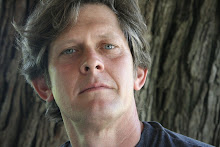
Its a jungle up there – or at least it could be.
Green roofs have their advantages according to Chicago’s mayor Richard M. Daley.
"As well as saving building owners money, green roofs…improve the environment and contribute to a healthy city," said Mayor Daley. "These are the kinds of things that improve the quality of life in a city. Our trees, flowers, fountains and benches soften the city's rough edges, add some color and make people feel more at peace with the urban environment."
What is a green roof? In essence, a green roof is composed of indigenous plant life and soil over a waterproof membrane – all on the rooftop of a building.
Environmentally, green roofs offer many benefits. The insulated thermal mass keeps building temperatures warmer in the winter and cooler in the summer. Vegetation in an urban environment counteracts the “heat sink” affect of concrete and asphalt. Green roofs reduce storm water runoff; they clean pollutants from the air and pump additional oxygen into the urban environment.
Functionally, planted roofs lengthen the lifespan of the roof and provide extra patio space for the inhabitants. And urban gardens, including herbs and vegetables, make great use of city rooftops.
Structure must be considered in any green roof adaptation. Smaller plant life takes less soil and can generally be installed on most roofs. Larger trees with bigger root balls should be located above existing structural elements (a column or large beam) so the weight can be transferred to the ground.
A few years ago, Chicago started a grant program (up to $5000) to encourage the installation of green roofs across the city. Chicago City Hall sports a green roof installed by the city in 2001. Since then, the city has saved tens of thousands of dollars on energy costs for this building alone.
Here’s a link for Chicago’s green roof program.
http://www.artic.edu/webspaces/greeninitiatives/greenroofs/main_map.htm
And a link to a site devoted to green roofs.
http://greenroofs.com/
Green roofs have their advantages according to Chicago’s mayor Richard M. Daley.
"As well as saving building owners money, green roofs…improve the environment and contribute to a healthy city," said Mayor Daley. "These are the kinds of things that improve the quality of life in a city. Our trees, flowers, fountains and benches soften the city's rough edges, add some color and make people feel more at peace with the urban environment."
What is a green roof? In essence, a green roof is composed of indigenous plant life and soil over a waterproof membrane – all on the rooftop of a building.
Environmentally, green roofs offer many benefits. The insulated thermal mass keeps building temperatures warmer in the winter and cooler in the summer. Vegetation in an urban environment counteracts the “heat sink” affect of concrete and asphalt. Green roofs reduce storm water runoff; they clean pollutants from the air and pump additional oxygen into the urban environment.
Functionally, planted roofs lengthen the lifespan of the roof and provide extra patio space for the inhabitants. And urban gardens, including herbs and vegetables, make great use of city rooftops.
Structure must be considered in any green roof adaptation. Smaller plant life takes less soil and can generally be installed on most roofs. Larger trees with bigger root balls should be located above existing structural elements (a column or large beam) so the weight can be transferred to the ground.
A few years ago, Chicago started a grant program (up to $5000) to encourage the installation of green roofs across the city. Chicago City Hall sports a green roof installed by the city in 2001. Since then, the city has saved tens of thousands of dollars on energy costs for this building alone.
Here’s a link for Chicago’s green roof program.
http://www.artic.edu/webspaces/greeninitiatives/greenroofs/main_map.htm
And a link to a site devoted to green roofs.
http://greenroofs.com/





No comments:
Post a Comment